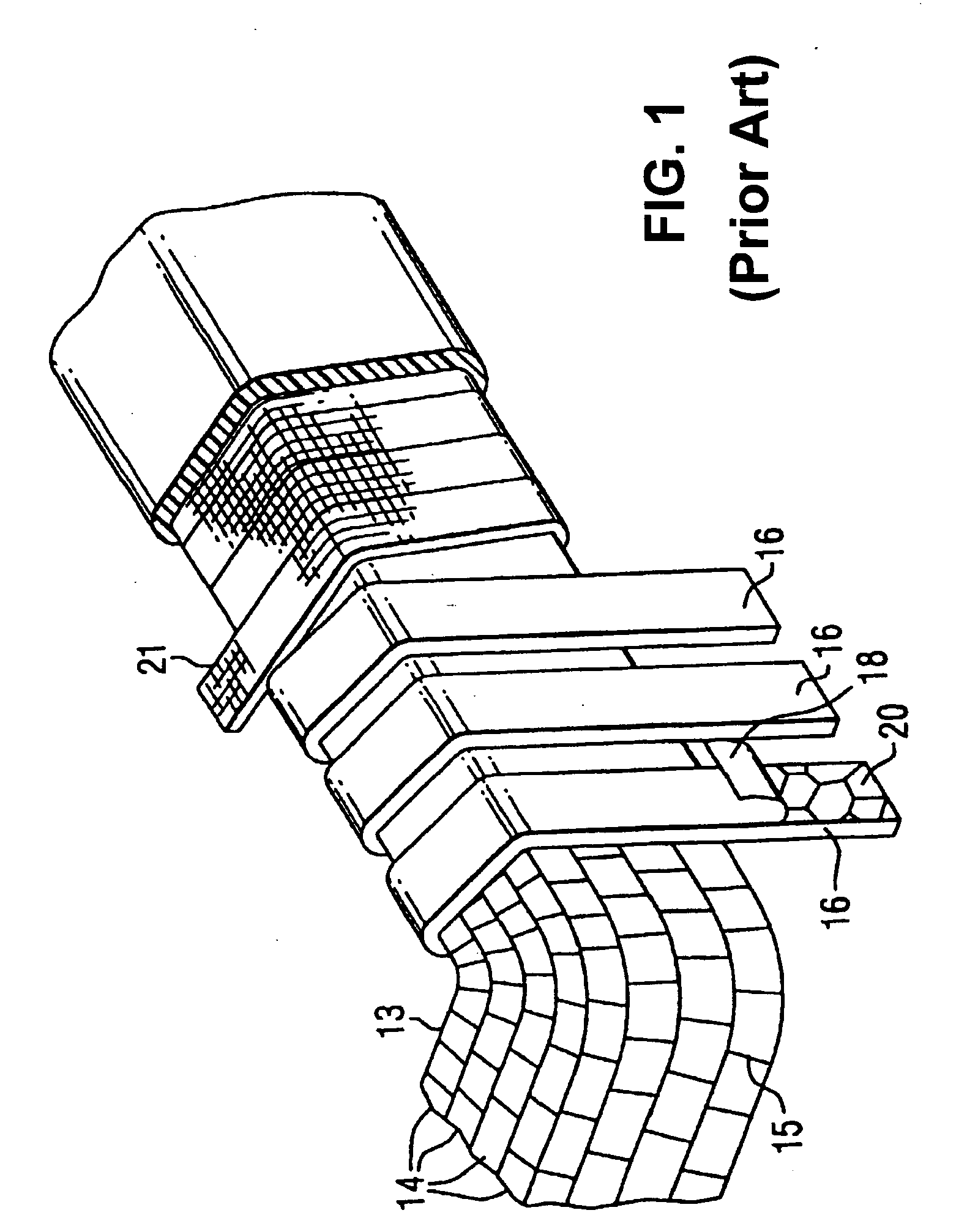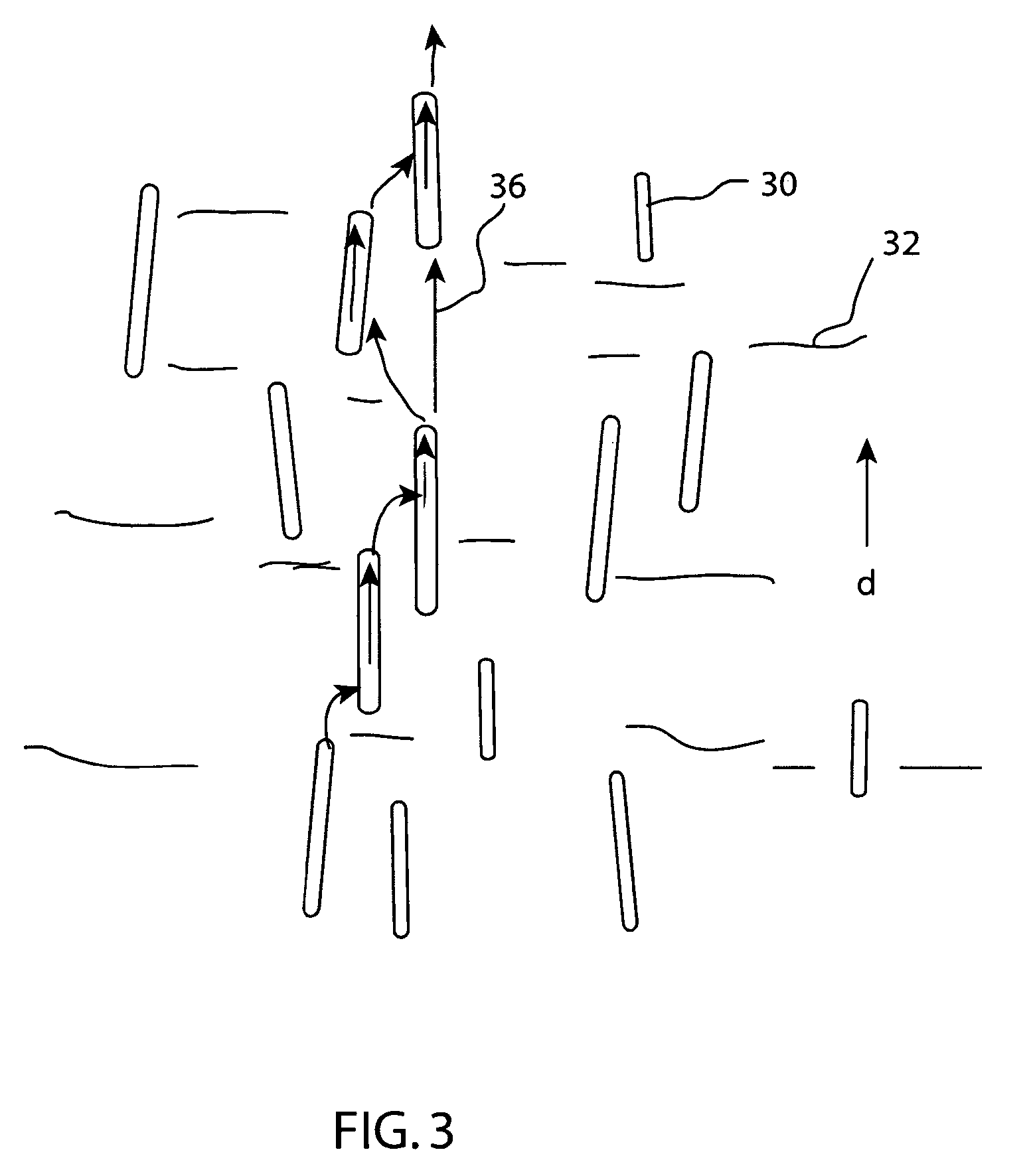High thermal conductivity materials aligned within resins
- Summary
- Abstract
- Description
- Claims
- Application Information
AI Technical Summary
Benefits of technology
Problems solved by technology
Method used
Image
Examples
Embodiment Construction
[0025] High thermal conductivity (HTC) composites comprise a resinous host network combined with fillers that are two phase organic-inorganic hybrid materials. The organic-inorganic hybrid materials are formed from two phase organic-inorganic composites, from organic-inorganic continuous phase materials that are based on molecular alloys, and from discrete organic-dendrimer composites in which the organic-inorganic interface is non-discrete with the dendrimer core-shell structure. Phonon transport is enhanced and phonon scattering is reduced by ensuring the length scales of the structural elements are shorter than or commensurate with the phonon distribution responsible for thermal transport.
[0026] Two phase organic-inorganic hybrids may be formed by incorporating inorganic micro, meso or nano-particles in linear or cross linked polymers (thermoplastics) and thermosetting resins. Host networks include polymers and other types of resins, definitions of which are given below. In gene...
PUM
| Property | Measurement | Unit |
|---|---|---|
| Length | aaaaa | aaaaa |
| Fraction | aaaaa | aaaaa |
| Angle | aaaaa | aaaaa |
Abstract
Description
Claims
Application Information
 Login to View More
Login to View More - R&D
- Intellectual Property
- Life Sciences
- Materials
- Tech Scout
- Unparalleled Data Quality
- Higher Quality Content
- 60% Fewer Hallucinations
Browse by: Latest US Patents, China's latest patents, Technical Efficacy Thesaurus, Application Domain, Technology Topic, Popular Technical Reports.
© 2025 PatSnap. All rights reserved.Legal|Privacy policy|Modern Slavery Act Transparency Statement|Sitemap|About US| Contact US: help@patsnap.com



